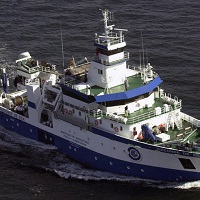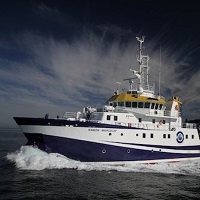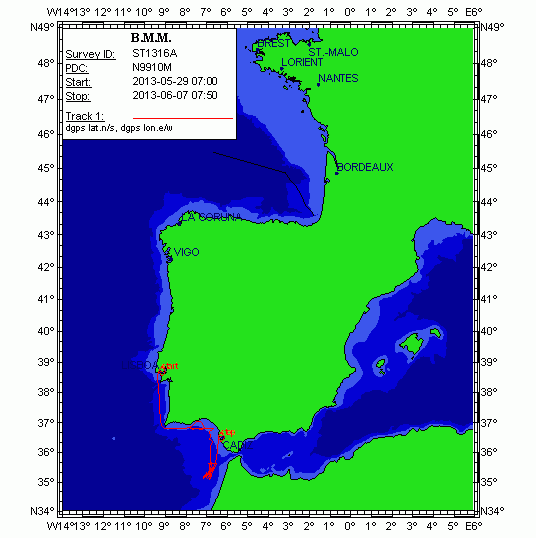Keyword
Seismic reflection
72 record(s)
Type of resources
Categories
Topics
INSPIRE themes
Keywords
Contact for the resource
Provided by
Years
Formats
Status
-

The ZEE-2001-EZA campaign was part of the program "OCEANOGRAPHIC HYDROGRAPHIC STUDY OF THE EXCLUSIVE SPANISH ECONOMIC ZONE" (PIHOZE), approved by the Council of Ministers, dated April 22, 1993, and carried out by the Hydrographic Institute of the Navy (IHM) and the Spanish Institute of Oceanography (IEO). The ZEE-2001-EZA campaign aimed to carry out the necessary work to obtain the hydrographic-oceanographic knowledge of the eastern part of the Canarian Archipelago, mainly the areas adjacent to the Islands of Fuerteventura and Lanzarote and complete the work carried out during the campaigns Zee-98, Zee-99 and Zee-00, carried out aboard the B.I.O. Hesperides
-

Study of different sectors of the Mediterranean margins of Andalusia to analyze the potential existing active tectonic structures, capable of generating geological risks either due to the generation of earthquakes, or secondarily due to the triggering of landslides and / or tsunamis.
-
Salt deformation and sub-salt fluid circulation in the Algero-Balearic abyssal plain(SALTFLU): 1) To identify the three dimensional structure of the salt deformation structures of the Algero-Balearic abyssal plain;2) to collect evidence of fluid migration, accumulation and extrusion at the seafloor; 3) to constrain the link between the observed overburden fluid circulation and deep (sub-salt) origins; 4) to link the fluid circulation pattern to the recent basin evolution with special regard to the tectonic stress propagation derived from convergence between the Africa and European plates.
-

Bathymetry and seismic work on the coast of the island of Menorca (Baleares Islands)
-

The northern "Contourite Depositional System" located within the Gulf of Cadiz is well studied and was drilled last year during IODP expedition 339. We aim to acquire 3 additional seismic lines over these drill sites towards the shallow shelf for sequence stratigraphic studies and acquire a connection profile to the southern part of the Gulf, along the Moroccan margin. The research along the Moroccan margin builds upon previous investigations (R/V Belgica 2002, 2005, 2008) and will focus on smaller current-related deposits in order to fully understand the hydro- and sediment dynamic picture of this area during the past 2.4 Ma. This will allow to better assess the evolution of cold-water coral ecosystems. This will be achieved by gathering additional seismic lines and perform hydrographic measurements. In the second half of June, several cores will be gathered from the southern part of the Gulf of Cadiz with the R/V Marion Dufresne. In order to visualize the subsurface of these core sites, 6 seismic profiles will be gathered, connecting these core sites.
-

Carry out surveys with Side Scan Sonar Sweeping in zonesProposals. They focus on the seabed research of Mediterranean sea (Spain ), both indirect and direct. Carry out a survey of the fishing beaches to later elaborate fishing charts. Systematic bathymetric survey of the study areas with 100% coating (Multi-beam echo sounder EM-300). seismic profiles according to the ship's defeat (Topas 710 system). Performance of sound velocity profiles in the water column. Side sweep sonar in selected areas. Sediment sampling (Shipeck dredges - Box corer). Sampling of Rocky Outcrops (Rock Dredge).
-

Calibration of Multi-beam echo sounder( EM-300 ) and single channel seismic reflection (TOPAS).
-

They focus on the seabed research of EEZ Canarias (Spain ), both indirect and direct. Carry out a survey of the fishing beaches to later elaborate fishing charts. Systematic bathymetric survey of the study areas with 100% coating (Multi-beam echo sounder EM-300). seismic profiles according to the ship's defeat (Topas 710 system). Performance of sound velocity profiles in the water column. Side sweep sonar in selected areas. Sediment sampling (Shipeck dredges - Box corer). Sampling of Rocky Outcrops (Rock Dredge).
-

They focus on the seabed research of Atlantic ocean (Galicia, Spain ), both indirect and direct. Carry out a survey of the fishing beaches to later elaborate fishing charts. Systematic bathymetric survey of the study areas with 100% coating (Multi-beam echo sounder EM-300). seismic profiles according to the ship's defeat (Topas 710 system). Performance of sound velocity profiles in the water column. Side sweep sonar in selected areas. Sediment sampling (Shipeck dredges - Box corer). Sampling of Rocky Outcrops (Rock Dredge).
-

Swath bathymetry and seismic studies using the following echosounders: EM710, TOPAS, EK60, EA600 and seismic Sparker. Also gravity cores and box core were used.
 Catálogo de datos del IEO
Catálogo de datos del IEO